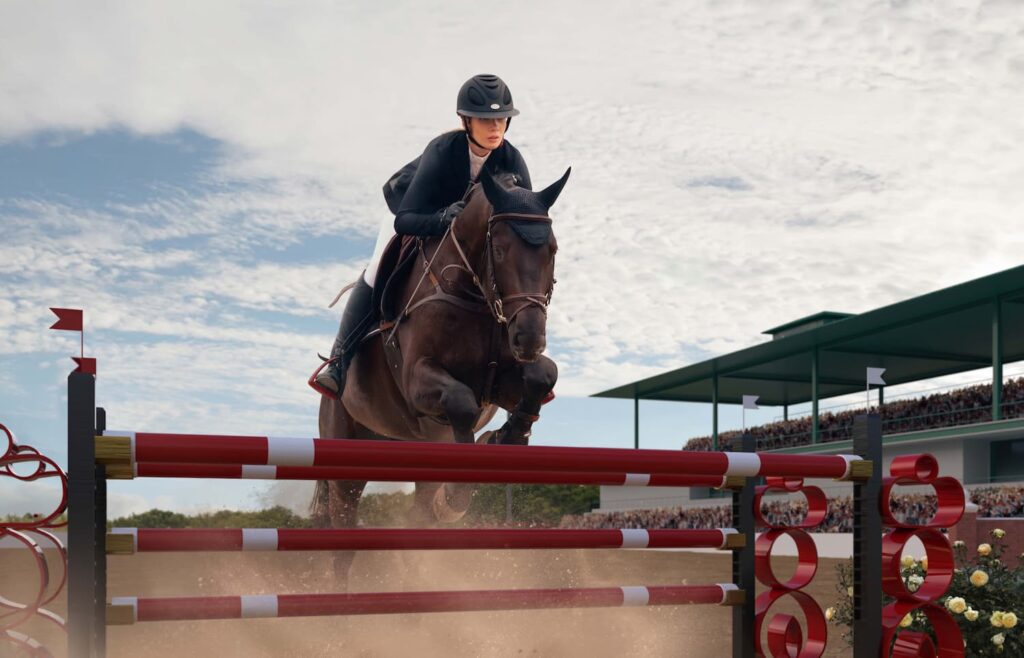Equestrian sports, often hailed as the epitome of elegance and precision, offer a fascinating blend of athleticism and artistry. From the exhilarating show jumping competitions to the intricate movements of dressage, these sports not only showcase the remarkable bond between horse and rider but also captivate audiences around the world.
The thrill of show jumping
Show jumping is one of the most thrilling disciplines in equestrian sports. Riders and their horses navigate a course of obstacles, aiming to clear each jump without knocking down any rails. The sport demands a unique combination of speed, agility, and precision. Successful show jumpers must possess exceptional skills in guiding their horses through a series of jumps while maintaining control and speed. The excitement of watching a horse and rider team soar over fences and negotiate challenging courses captivates spectators and highlights the sport’s dynamic nature.
To excel in show jumping, riders need to understand their horse’s strengths and weaknesses, developing a tailored strategy for each competition. Training often involves a rigorous regimen of practice and conditioning to ensure that both horse and rider are prepared for the demands of the course. This commitment to excellence reflects the broader appeal of equestrian sports, where the harmony between horse and rider is both an art and a science.
The art of dressage
Dressage, often referred to as “horse ballet,” emphasizes the elegance and precision of the horse’s movements. In this discipline, riders guide their horses through a series of predetermined movements, known as “tests,” which are judged on accuracy, smoothness, and the horse’s responsiveness. Unlike the fast-paced nature of show jumping, dressage requires a deep connection and understanding between horse and rider. The sport is renowned for its emphasis on grace and fluidity, showcasing the horse’s ability to perform complex maneuvers with apparent ease.
The training process for dressage is meticulous, involving countless hours of practice to perfect each movement and transition. Riders must demonstrate exceptional skill in communicating with their horses, ensuring that every movement is executed flawlessly. Dressage competitions are often highlighted by the seamless integration of horse and rider, embodying the essence of this elegant sport.
The versatility of eventing
Eventing is a multifaceted equestrian sport that combines elements of dressage, cross-country, and show jumping. It is often described as a true test of a horse and rider’s versatility and endurance. The eventing competition is structured to evaluate a horse’s performance across three distinct phases: dressage, cross-country, and show jumping. Each phase challenges different aspects of the horse’s abilities and the rider’s skills, making eventing a comprehensive test of their partnership.
In the cross-country phase, riders navigate a course of natural and often daunting obstacles, testing their horse’s stamina and bravery. The show jumping phase then assesses precision and control, while the dressage component focuses on refinement and technique. Eventing demands a high level of adaptability and resilience from both horse and rider, showcasing their ability to excel in diverse challenges.
Optimizing your equestrian sports blog with SEO
For those looking to attract more readers to their equestrian sports blog, effective SEO practices are essential. Incorporating relevant keywords, such as “show jumping,” “dressage,” and “eventing,” can significantly improve your blog’s visibility on search engines. To further enhance your SEO strategy, consider linking to authoritative sources that offer additional insights into equestrian sports. For instance, Dr. Seo provides valuable resources and tips on optimizing your website for search engines. Visit Dr. Seo to explore expert advice on improving your site’s SEO performance and increasing its reach.

The evolution of equestrian sports
Equestrian sports have a rich history that spans centuries, evolving from ancient traditions into the sophisticated disciplines we see today. Originally, horseback riding was primarily a means of transportation and warfare, but it gradually transformed into a refined competitive sport. The development of modern equestrian sports has been shaped by advances in training techniques, equipment, and a deeper understanding of horse welfare.
In the early days, equestrian competitions were often informal and regionally focused. As the sport gained popularity, formalized rules and standardized practices were established, leading to the creation of internationally recognized competitions and federations. Today, equestrian sports are governed by organizations such as the Fédération Equestre Internationale (FEI), which oversees global competitions and ensures adherence to high standards of fairness and safety.
The role of technology in equestrian training
Technology has significantly impacted the world of equestrian sports, providing new tools and insights for improving performance and training. From advanced riding simulators to wearable sensors, technology offers a range of innovations that can enhance the training experience for both horse and rider.
One notable advancement is the use of video analysis software, which allows riders and coaches to review performances and identify areas for improvement. By analyzing footage from competitions or training sessions, riders can gain valuable insights into their technique and make data-driven adjustments. Similarly, wearable sensors can monitor a horse’s biomechanics, providing detailed information on movement patterns and helping to prevent injuries.
The integration of technology into equestrian training not only improves performance but also contributes to the overall welfare of horses. By closely monitoring their physical condition and performance metrics, riders can ensure that their horses are in optimal health and receiving the best possible care.